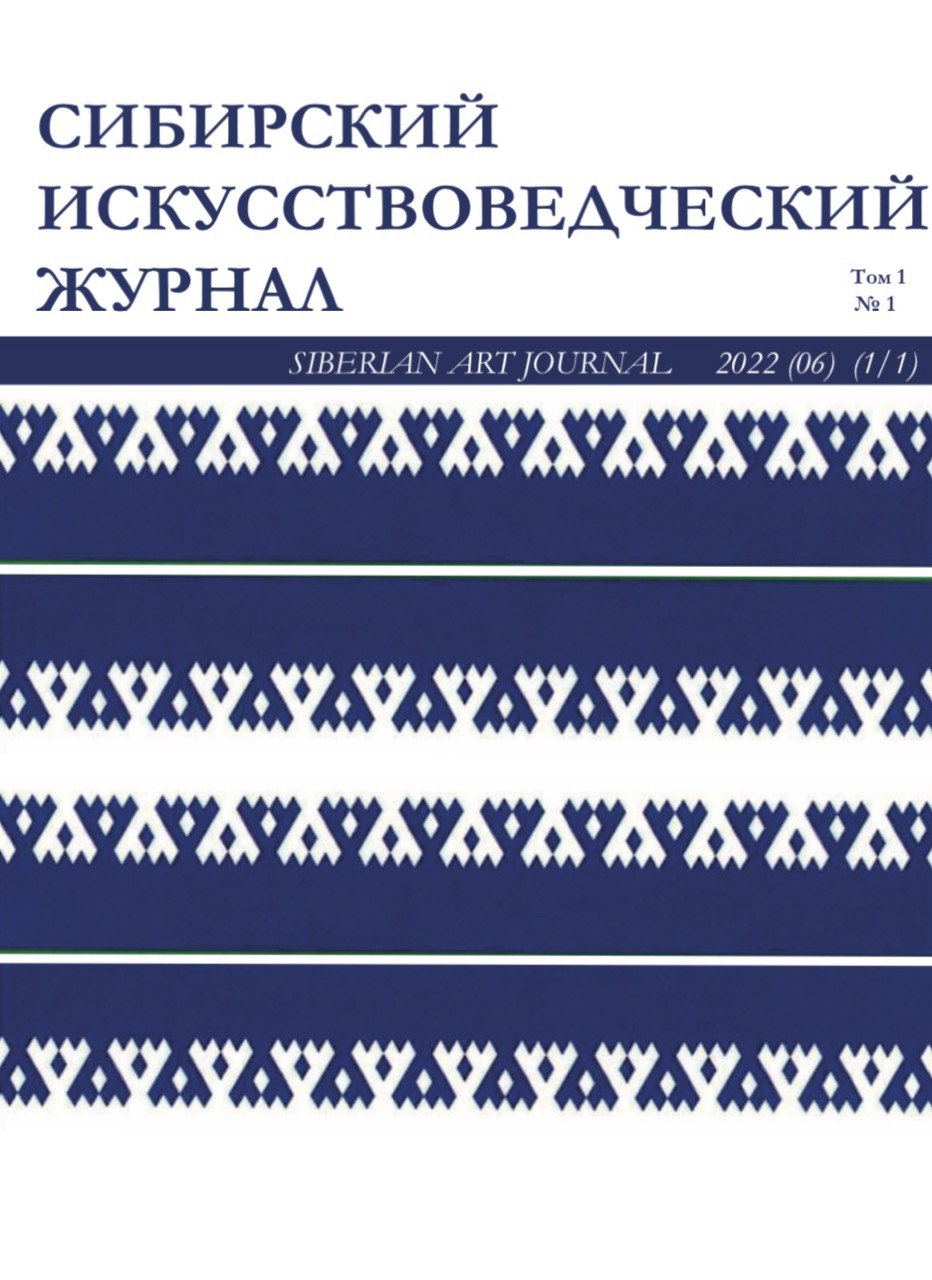This article examines the principles of artistic representation of cinema as a space for actualizing images of the unconscious in the work of Japanese animator Satoshi Kona. The research was conducted on the material of three animated films directed by the director – «Perfect Blue» (1997), «Millenium Actress» (2001), «Paprika» (2006), each of which contains an artistic image of cinema in its various manifestations. The analysis of the representation of cinema in these works of animated art was carried out using the method of psychoanalysis, based on the provisions formulated by S. Freud, J. Lacan and C. Metz. The psychoanalytic view of Satoshi Kon's creative work became the key to a new deeper understanding of the artistic idea of the studied animated works, and also allowed to study in detail Satoshi Kon's understanding of cinema as a field of manifestation of images of the human subconscious.
Satoshi Kon, animation art, psychoanalysis, the unconscious
1. Biryukova, O. O. (2021). Between dream and reality (Satoshi Kon's "Paprika"). Transformation of reality: strategies and practices: Proceedings of the international conference, Yekaterinburg, March 25–27, 2021. Yekaterinburg: Ural University, 4–7.
2. Borisova, A. E. (2018). Semiotics of cinema as a way to understand cinematographic texts. Humanities Readings at the Polytechnic University: Proceedings of the annual All-Russian scientific and practical student-aspirant conference, St. Petersburg, February 17, 2018. St. Petersburg: Polytech-Press, 106–111.
3. Butyrskaya, N. Yu. (2023). The concept of personality in the structural psychoanalysis of Jacques Lacan. Philosophy in the modern world: Proceedings of the VIII scientific readings of the Tambov regional branch of the Russian Philosophical Society, Tambov, March 16, 2023. Tambov: Derzhavin Publishing House, 37–41.
4. Glushneva, Yu. D. (2013). Cinematographic signifier through the lens of psychoanalytic philosophy in Christian Metz's concept. Modern Problems of Science and Education, (5), 658.
5. Denisova, A. I. (2014). Semiotics in manga and anime. Bulletin of Tambov University. Series: Humanities, 12(140), 260–264.
6. Ivanov, B. A. (2001). Introduction to Japanese animation.
7. Kon, S. (2021). Interview with M. Slutsky for Montreal Mirror (M. Slutsky Archive). Retrieved from https://www.markslutsky.com/archive/something-good-28-satoshi-kon-the-lost-interview/
8. Korneeva, Yu. N. (2018). The unconscious and dreams in the concept of Z. Freud. Psychology, Education: Current and Priority Research Directions: Proceedings of the International scientific-practical conference, Tver, May 15, 2018. Tver: Tver State University, 174–175.
9. Krivulya, N. G. (2022). Allusion as an element of intertextuality in animated films. Theatre. Painting. Cinema. Music, (3), 144–167.
10. Krivulya, N. G. (2012). Animatology: Evolution of world animatographies. Moscow: Amethyst, 779.
11. Kuchmin, E. A. (2021). The concept of the unconscious in Z. Freud's teachings. Regional Aspects of Professional Education Development: Theory, Methodology, Current Problems: Proceedings of the international scientific-practical conference, St. Petersburg, May 14, 2021. St. Petersburg: Leningrad State University named after A. S. Pushkin, 184–186.
12. Melyokhin, A. I. (2022). The Lacanian perspective on dream interpretation. Journal of Clinical and Applied Psychoanalysis, 3(2), 106–118.
13. Lacan, J. (1997). The mirror stage and its role in the formation of the "I" function. In J. Lacan, The Instance of the Letter in the Unconscious or Reason Since Freud. Moscow: Russian Phenomenological Society, Logos, 7–14.
14. Metz, C. (2013). The imaginary signifier. Psychoanalysis and cinema. (D. Kalugin & N. Movnin, Trans.; A. Chernoglazov, Ed.). St. Petersburg: European University Press, 334.
15. Meshcheryakov, B. G., & Zinchenko, V. P. (2002). Big Psychological Dictionary. 3rd ed. St. Petersburg: Prime-Euroznak, 632.
16. Moiseenko, V. S. (2024). Artistic images as reflections of changes in Japanese society: Dr. Kosaku Tokita in Satoshi Kon's "Paprika". Culture and Art, (9), 72–80.
17. Moiseenko, V. S. (2021). The artistic image of the modern Japanese woman in Satoshi Kon's "Paprika". Culture and Art, (11), 46–57.
18. Pechenina, O. V. (2007). The functions of the real, the imaginary, and the symbolic in the communicative model of structural psychoanalysis by J. Lacan. Bulletin of St. Petersburg University. International Relations, (4).
19. Tuzova, A. P. (2018). The imaginary, the symbolic, and the real in cinema. Artikult, 3(31), 45–51.
20. Freud, Z. (1913). The interpretation of dreams. Moscow: Modern Problems, 448.
21. Freud, Z. (1923). The Ego and the Id. Retrieved from https://librebook.me/the_interpretation_of_dreams
22. Tsidina, T. D. (2018). History and theory of animation: Lectures. Chelyabinsk State Institute of Culture. Chelyabinsk: ChGIK, 151.
23. Choo, H.-J. (2014). A study on persona of double-sided characters shown in Satoshi Kon's works. Cartoon and Animation Studies, 35, 181–208.
24. Gürkan, H., & Gezmen, B. (2024). Cinema and the digital revolution: The representations of digital culture in films. Evolutionary Studies in Imaginative Culture, 1–15.
25. Lacan, J. (2011). La troisième. La Cause Freudienne, Navarin/Le Seuil, 24.
26. Lapworth, A. (2019). Guattari and the micropolitics of cinema: The desiring-machines of Satoshi Kon. In Why Guattari? A Liberation of Cartographies, Ecologies and Politics. Routledge, 187–201.
27. Lefebvre, M. (2018). Christian Metz and aesthetics. In Christian Metz and the codes of cinema. Film semiology and beyond, 147–184.
28. Münsterberg, H. (1916). The photoplay. A psychological study. Retrieved from https://www.gutenberg.org/files/15383/15383-h/15383-h.htm
29. Perkins, C. (2019). Kon Satoshi and Japan’s monsters in the city. Nordlit, 142–152.
30. Swale, A. (2021). Anime and the conquest of time: Memory, fantasy and the “time-image” from Ghost in the Shell to Your Name.
31. Tröhler, M. (2018). Christian Metz and film semiology – dynamics within and on the edges of the ‘model’: An introduction.





